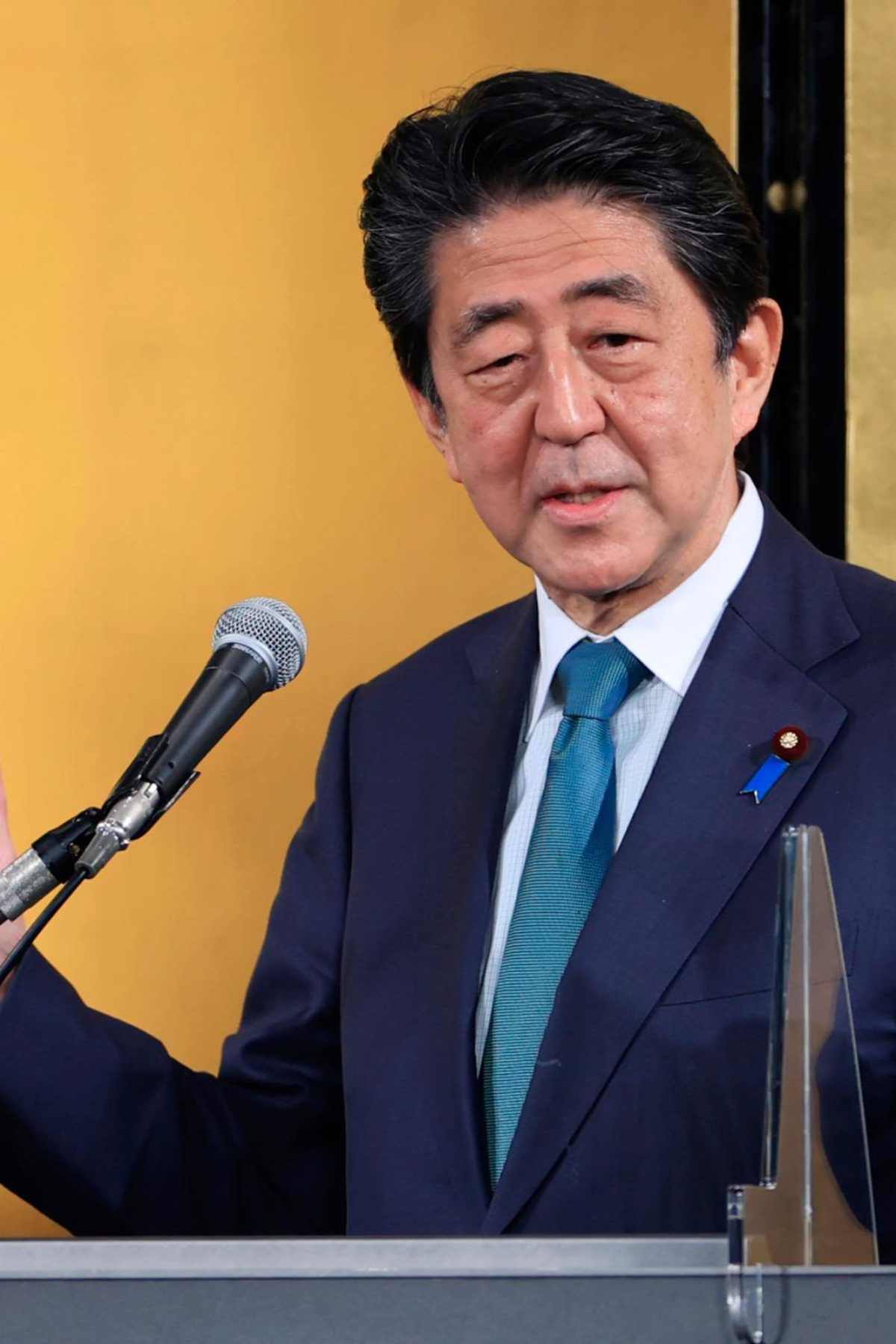Shinzō Abe Age , Career, Family, Net Worth, Height Bio 2025.

Shinzō Abe was one of Japan’s most influential political figures, known for his vision of a stronger, more confident Japan on the global stage. As the longest-serving Prime Minister in post-war Japan, his leadership combined traditional values with modern policy reforms. From economic revival under Abenomics to reshaping Japan’s international role, Abe left behind a legacy that continues to shape Japan’s future.
Real Name
Shinzō Abe was born Shinzō Abe, carrying forward a family name deeply rooted in Japan’s political tradition. Unlike many public figures who adopt stage names, he used his given name throughout his career—reflecting the weight and heritage of the Satō–Kishi–Abe political family.
| Category | Details |
|---|---|
| Full Name | Shinzō Abe |
| Date of Birth | September 21, 1954 |
| Place of Birth | Tokyo, Japan |
| Date of Death | July 8, 2022 |
| Age at Death | 67 years old |
| Nationality | Japanese |
| Religion | Shinto |
| Height | 175 cm (5 ft 9 in) |
| Occupation | Politician, Former Prime Minister of Japan |
| Political Party | Liberal Democratic Party (LDP) |
| Education | Bachelor’s in Political Science, Seikei University (1977); Attended University of Southern California (Public Policy Studies) |
| Parents | Father: Shintarō Abe (Former Foreign Minister) Mother: Yoko Kishi |
| Grandfather | Nobusuke Kishi (Prime Minister, 1957–1960) |
| Siblings | Brothers involved in political and business circles |
| Spouse | Akie Abe (née Matsuzaki) |
| Children | None |
| Early Career | Secretary to his father, gaining experience in diplomacy and legislative affairs |
| First Term as Prime Minister | 2006–2007 (Resigned due to health issues) |
| Second Term as Prime Minister | 2012–2020 (Longest-serving PM in post-war Japan) |
| Major Policies (Abenomics) | Monetary easing, fiscal stimulus, and structural reforms to revive Japan’s economy |
| Foreign Policy Initiatives | Strengthened Japan–U.S. alliance, promoted Free and Open Indo-Pacific Strategy, improved relations with India and Western allies |
| National Security Stance | Advocated for constitutional revision to expand Japan’s defense capabilities |
| Communication Style | Preferred formal communication; utilized social media through his office and LDP for public engagement |
| Cultural and Social Beliefs | Deep respect for Japanese tradition, family values, and national heritage |
| Notable Achievements | – Longest-serving Japanese PM – Revived economy through Abenomics – Reinforced Japan’s global partnerships |
| Controversies | Faced political scandals and criticism over defense reforms but retained strong leadership approval |
| Hobbies | Reading (especially history and military strategy), Golf (used in diplomacy) |
| Favorite Things | Family, Japanese culture, historical literature, and tradition |
| Interesting Facts | – Met Vladimir Putin 27 times – Resigned twice due to health – Assassination in 2022 led to national mourning and debate on political security |
Early Life and Education
Born on September 21, 1954, in Tokyo, Japan, Abe grew up in a politically active environment. Surrounded by discussions on governance and diplomacy, he developed an early interest in national affairs.
He studied law and political science at Seikei University, graduating in 1977. Later, he briefly attended the University of Southern California, where he broadened his worldview and gained valuable exposure to global political perspectives.
Parents and Siblings
Abe came from a powerful political lineage. His father, Shintarō Abe, served as Japan’s Foreign Minister, and his maternal grandfather, Nobusuke Kishi, was Prime Minister from 1957 to 1960. His mother, Yoko Kishi, was active in cultural and social causes.
Growing up in such a household, Abe absorbed the intricacies of diplomacy and governance. His siblings also supported the family’s political presence, further strengthening their influence within Japan’s Liberal Democratic Party (LDP).
Children
Shinzō Abe married Akie Abe, a well-known social activist and media personality. The couple did not have children, but Akie played a significant public role—often participating in cultural programs, charity events, and diplomatic activities alongside her husband.
Age, Weight, Height, and Physical Appearance
At the time of his passing in 2022, Abe was 67 years old. He stood approximately 175 cm (5 ft 9 in) tall and maintained a professional, composed demeanor throughout his career. His calm yet commanding presence mirrored his leadership style—disciplined, confident, and precise.
Before Fame
Before entering national politics, Abe worked as secretary to his father, which provided him firsthand experience with Japan’s legislative process and international diplomacy. His early exposure to political operations helped him build credibility, eventually leading to his first election to the House of Representatives in 1993.
Career
Abe’s political journey can be divided into two major phases:
First Term (2006–2007)
In 2006, Abe became Japan’s youngest post-war Prime Minister at age 52. However, his first term was short-lived due to health challenges and political instability, leading to his resignation in 2007.
Second Term (2012–2020)
Returning to power in 2012, Abe became Japan’s longest-serving Prime Minister. His administration focused on:
-
Economic Revival: Implementing Abenomics, a blend of monetary easing, fiscal stimulus, and structural reforms.
-
National Security: Advocating for constitutional reform to allow a stronger defense role for Japan’s military.
-
Foreign Policy: Strengthening alliances, especially with the United States, and promoting the Free and Open Indo-Pacific Strategy.
Abe’s government emphasized continuity, stability, and Japan’s proactive engagement in global affairs.
Social Media Presence
While Abe personally favored traditional media and formal communication, his office and the Liberal Democratic Party actively used Twitter, Facebook, and YouTube to engage younger voters and share policy updates. His occasional appearances in interviews and public broadcasts helped humanize his image and connect him with a broader audience.
Nationality and Religion
Shinzō Abe was Japanese and followed Shinto traditions, which influenced his sense of national pride and ceremonial practices. His beliefs subtly guided his political vision, particularly in areas related to cultural diplomacy and Japan’s national identity.
Legacy and Impact
Abe’s impact on Japan and the world was profound and multifaceted:
-
Economic: His Abenomics program revitalized Japan’s stagnant economy and promoted global investor confidence.
-
Diplomatic: Strengthened Japan’s strategic partnerships, notably with the United States and India.
-
Security: Advocated constitutional revision to expand Japan’s defense capabilities—an effort both praised and criticized.
-
Cultural: Promoted Japanese nationalism and traditional values amid global pressures for modernization.
Despite controversies and unfinished reforms, Abe’s leadership reshaped Japan’s role in global politics and defined a new era of stability and assertiveness.
Hobbies
Abe enjoyed reading, particularly books on history and military strategy, which often influenced his policy thinking. He was also an avid golfer, using the sport as a tool for informal diplomacy—most notably playing with global leaders like Donald Trump.
Favorite Thing
Abe deeply valued family, tradition, and Japan’s cultural heritage. He frequently referenced historical figures and lessons from Japan’s past in his speeches, emphasizing the importance of preserving national identity while embracing modern progress.
Interesting Facts
-
Longest-serving Prime Minister in post-war Japan.
-
Survived multiple political scandals with consistently high approval ratings.
-
Met with Vladimir Putin 27 times during his tenure.
-
His assassination in 2022 sparked a nationwide debate about political security.
-
Advocated for Japan’s more active role in international affairs.
FAQs
1. What were the main policies of Shinzō Abe?
His key policies included Abenomics for economic revival, strengthening national defense, and enhancing Japan’s global alliances.
2. What did Shinzō Abe achieve in foreign relations?
Abe reinforced Japan-U.S. relations, met numerous global leaders, and advanced the Free and Open Indo-Pacific vision to ensure regional stability.
3. Why did Shinzō Abe resign in 2020?
He stepped down due to recurring health issues related to ulcerative colitis, the same illness that ended his first term in 2007.
4. What happened on July 8, 2022?
Abe was assassinated during a campaign rally in Nara, Japan. The tragedy shocked the world and reignited discussions about public safety.
5. What is Shinzō Abe’s legacy?
Abe’s legacy includes economic transformation, strengthened diplomacy, national security reform efforts, and enduring political influence.
Conclusions
Shinzō Abe’s life embodied ambition, resilience, and service. From his early exposure to politics within a storied family to becoming Japan’s most enduring Prime Minister, his leadership redefined Japan’s economy, foreign relations, and global image.
His tragic assassination in 2022 marked the end of an era, yet his influence continues to guide Japan’s path in the 21st century—reminding future leaders that vision, continuity, and courage can leave a lasting imprint on a nation.







